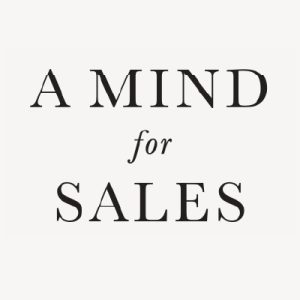 Guest post Monday brings us insight from Kelley Robertson of Fearless Selling. He digs deeper into the matter of price vs. value and hits on points all salespeople could use to further refine their sales motivation and selling processes.
Guest post Monday brings us insight from Kelley Robertson of Fearless Selling. He digs deeper into the matter of price vs. value and hits on points all salespeople could use to further refine their sales motivation and selling processes.
Many people — salespeople, buyers and consumers — confuse price with value and use the words interchangeably.
Unless prospects and customers are given a reason to do otherwise, many will focus on price.
The key is to invest time asking them a few questions early in the sales conversation to determine other factors that will influence their buying decision.
Here’s a suggestion on how you can manage that conversation.
Start by asking, “What is the most important aspect of this purchase?”
If they say price ask, “Do you mean getting the lowest price or the best value for your money?”
Many people will respond with, “What’s the difference?” or “What do you mean?” or “Getting the best value for my money.”
Here’s how you can respond to each scenario:
“What’s the difference?” and “What do you mean?”
The best way to respond to either of these questions is to say, “Many people confuse price and value. Some people aren’t interested in the quality of the product or the installation and just want the lowest possible price. Others want hassle-free installation and a high quality product that will last longer. Which of these best describes you?”
In some cases people might say, “I want the best quality product for the lowest price.” This may indicate that they are a bottom feeder.
A bottom feeder is a person whose primary focus is to get the absolute lowest price on a particular product or service. Unfortunately, these individuals often severely erode your profit margin, which means although you may close the deal, you will do so at a cost.
Unless it makes sound business sense to close a deal with little or no profit, I believe you should let these prospects do business with your competition. Let your competitor lose money on the sale and focus your attention on people who know there is more to a purchase than price.
“Getting the best value for my money”
Once again, you need to ask the other person what they mean by this vague statement. Clarify what they mean by saying, “Value means different things to different people. Tell me what it means to you.” This forces them to consider what they actually mean by that statement and it gives you insight into what is really important to them.
Far too often, salespeople assume they know what their prospects means. However, this assumption can lead the salesperson down a dangerous path because they may offer a discount thinking that it will give their prospect more value for their money. But, if the customer wants top-notch service or expedited delivery, the solution is not appropriate.
You can also help people determine the value of your product, service or offering by outlining some of the challenges they may encounter using another company.
You can do that by saying something like, “Some of our customers have found that buying a slightly cheaper product has cost them time and frustration because the company didn’t (fill in the blank with the problem such as missing delivery days, disruption, problems during installation, etc).”
You don’t want to bash the competition, but you can highlight general concerns or problems your prospect may encounter by using a company other than yours.
Certainly price is a factor in every sale. I will never question that. However, it is seldom the primary reason people make a buying decision.
If you fail to determine what is important to your buyers, prospects and customers, and then effectively position your product, service or solution properly, price will become a motivating factor simply through default.
Do you know what sales blunders are costing you money? Increase your sales with a FREE audio program, Sales Blunders That Cost You Money, and two other sales-boosting resources by subscribing to Kelley’s newsletter at www.Fearless-Selling.ca or email Kelley@Fearless-Selling.ca


